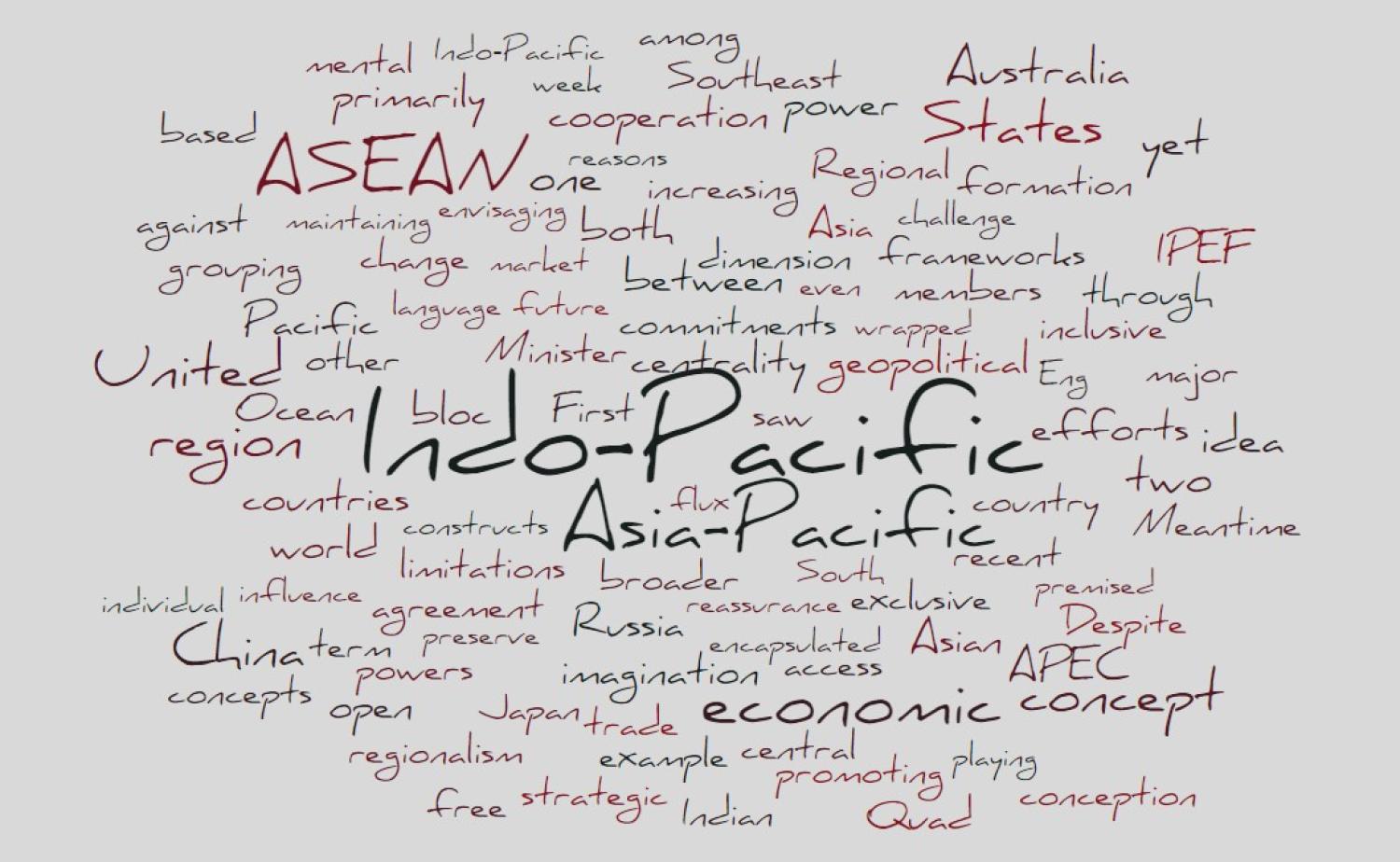Geopolitical imagination offers a mental map in which there is no one way of framing the world. Power contests often change this mental topography. “Asia-Pacific” and “Indo-Pacific” are two such constructs that define the geopolitics of the 21st century. And despite the overlap and efforts to change the official vernacular, a tension remains between use of the two – hinted at this week in comments by Singapore’s Defence Minister Ng Eng Hen, who described Australia in complimentary terms, as “not only just an Indo‑Pacific country, but an Asian country”.
Different circumstances saw these concepts rise to prominence. “Asia-Pacific” emerged in the 1960s and was later institutionalised through the formation of the Asia Pacific Economic Cooperation (APEC) forum in the 1980s. However, the term Asia-Pacific was not inclusive of important regional countries such as India. Nor did it take into account the growing importance of the Indian Ocean for world maritime trade. It was Japan that saw the need to accommodate both shortcomings, so with support from Australia and the United States championed the concept of the Indo-Pacific.
This has led scholars to suggest that Asia-Pacific has been replaced by Indo-Pacific as the preeminent geopolitical construct in the region. Yet even with the Indo-Pacific’s increasing popularity, the Asia-Pacific concept has not faded away. This is primarily for three reasons. First, the flux in the current world order, manifesting in China (along with Russia) decrying the Indo-Pacific concept; second, the concern from ASEAN to preserve its position as a central actor in the region; and third, the time-tested economic dimension of the Asia-Pacific, which the Indo-Pacific is yet to replicate.
In the recent strategic agreement between China and Russia, both states promised to build an open and inclusive security system centred around the Asia- Pacific. There have been numerous instances in the past when both China and Russia have expressed individual indignation about the Indo-Pacific concept. China’s Foreign Minister Wang Yi took aim at the Quad grouping last year, for example, asserting its Indo-Pacific strategy marked a ploy to encircle China and create divisions. But the recent joint statement was the first time that the two powers had jointly opposed the Indo-Pacific concept, suggesting efforts to forge an alternative bloc against the idea.
Meantime, ASEAN has grappled with the Indo-Pacific concept, envisaging the broader region as a closely integrated space with the Southeast Asian organisation playing a central role, encapsulated by the oft-repeated term “ASEAN centrality”. But the steadily increasing emphasis on the Indo-Pacific, as well as the emergence of the Quad grouping, involving Australia, Japan, India and the United States, is seen as a challenge to this focus.
Despite reassurance from the Quad members that they are not merely paying lip service to the idea of ASEAN centrality, Southeast Asian nations remain suspicious of concepts premised on exclusive cooperation. Additionally, the formation of AUKUS, linking Australia, the United Kingdom and United States, further key proponents of the Indo-Pacific idea, has exposed fissures among ASEAN members. This has compounded existing disunity on issues such as the South China Sea or the crisis in Myanmar.
Due to limitations in its decision-making mechanisms, coupled with its preference for maintaining equidistance from major poles of influence, ASEAN seeks to stand apart from great power rivalry. For ASEAN, the Asia-Pacific and the Indo-Pacific represent two complementary zones and it is not ready to commit entirely to one in place of the other.
But, as the old wisdom has it, money talks. Notwithstanding efforts by the United States to strengthen economic partnerships among the member countries of the Indo-Pacific region, one of the most fundamental differences between the Asia-Pacific and the Indo-Pacific is that the former is primarily an economic conception, whereas the latter encompasses broader strategic and geopolitical considerations.
The economic dimension of the Asia-Pacific has not yet been replicated by the Indo-Pacific.
For example, frameworks such as APEC and the Regional Comprehensive Economic Partnership, which were primarily based on the principle of ASEAN centrality, seek to increase access to new markets by promoting economic integration and reducing tariffs. APEC is a good illustration of open regionalism.
The Indo-Pacific Economic Framework (IPEF), meantime, lacks concrete commitments from the United States to provide greater access to its market. IPEF involves closed regionalism based on the logic of bloc diplomacy and exclusivity. As IPEF is not a conventional free trade agreement, it has limitations in enticing its partners and securing binding commitments.
This limits the imagination. The Indo-Pacific idea is at once exclusive yet is wrapped up in the language of a free and open region that fosters cooperation. To become an effective bloc, its economic frameworks must reflect these values by embracing inclusivity rather than being directed against any major power.
The tendency to view the Indo-Pacific and the Asia-Pacific through a competitive lens, with dominant powers promoting a preferred conception and downplaying that of rivals, will continue to bedevil the adoption of one or the other. The imagination and re-imagination of the Indian Ocean and Pacific Ocean region will persist and the risk is countries failing to imagine a future together.

